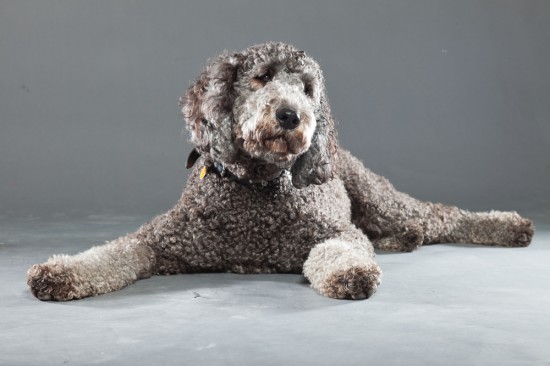
While many people consider crating to represent cruel treatment for dogs, it is actually a valuable way to manage your pet when you're unable to watch him. Crating offers the same benefits to dog owners as placing an infant in a crib offers to parents. In addition, canines typically think of their crates (or pens) as their personal dens. It becomes a place where they can seek refuge from noise, activity, and other annoyances in their households.
The manner in which your pet ultimately views his crate is influenced by his introduction to it. For this reason, taking a proper approach to training is critical. Few dogs are naturally accustomed to being confined, and many of them will resist attempts to make them so. If negative associations are made with confinement, crating will be difficult.
Below, we'll offer several suggestions to help your canine become accustomed to staying in his crate. With the following approach, he'll eventually enjoy having a place to call his own.
Avoiding Crate Aversion
During training, make sure you avoid mistakes that may cause your pet to loathe his pen. If he becomes aversive to it, he will never enjoy staying inside. Many owners struggle to help their dogs grow accustomed to being confined, unaware that their approach to training is causing an aversion. The result? Their pets become reluctant to enter their "dens"; they whine and bark when the door is closed with them; and they may even try to bite the person pushing them inside. Sometimes, the animals become frantic, biting and scratching the door.
These problems can be avoided. First, if your dog is reluctant to enter his pen, don't force him to do so. Second, make sure you don't leave your pet confined for excessively long periods. Third, don't place your canine inside his crate as a way to punish him. Fourth, make certain the pen is sufficiently large (but not too large). Your dog should be able to stand and lie down comfortably.
Neglecting to address these issues from the beginning will cause your canine to create negative impressions of his crate. If this happens, crating will become a persistent challenge.
Encouraging Your Dog To Enter His Crate
It's useful to discuss proper crate training in two stages: introduction and confinement. Some canines will happily enter their pens after being introduced to them. They are immediately comfortable being inside, even with the door closed (for short periods). Others need more coaxing.
Place your dog's pen in an area of your home that receives plenty of traffic. Doing so will help him avoid feeling isolated. Then, fill it with blankets, toys, and other items he enjoys (including treats) to increase his level of comfort. Open the door, and leave it open.
Your pet may investigate his crate on his own, especially if he detects the treats you've placed inside for him. Begin to provide his meals near the pen's entrance. With each meal, position his food bowl closer and closer until it is eventually within his crate. Praise him when he goes inside, but leave the door wide open.
The confinement stage must also be approached in small steps to avoid your canine developing an aversion to his crate. Here, the goal is to acclimate him to increasingly longer periods inside with the door closed. Begin by placing treats within his pen. Once he voluntarily enters, close the door. Allow him to spend two or three minutes inside with the door closed, but remain nearby. If he becomes distraught, let him out.
Over several days, lengthen the amount of time your dog spends confined in his crate. Keep him inside for five minutes, then ten, and then fifteen. While doing so, periodically leave the room for a minute or two to acclimate him to your absence. Praise him and give him a treat each time he successfully remains inside without become agitated.
With time, your canine will grow comfortable with being confined for several hours. The key is taking a slow, methodical approach that helps him adapt to the experience.
 Its Time For Flea And Worm Treatments For Your Cat
Its Time For Flea And Worm Treatments For Your Cat
 All About The Labradoodle
All About The Labradoodle
 Do You Use A Dog Crate For The Right Reasons?
Do You Use A Dog Crate For The Right Reasons?
 How To Proceed If Your Pedigree Dog Is Diagnosed With A Hereditary Health Condition
How To Proceed If Your Pedigree Dog Is Diagnosed With A Hereditary Health Condition
 Cats And Brain Aging - Mental Decline Of Your Cat
Cats And Brain Aging - Mental Decline Of Your Cat
 Are Some Breeds Of Dog Particularly Prone To Osteochondritis Dissecans?
Are Some Breeds Of Dog Particularly Prone To Osteochondritis Dissecans?
Copyright © 2005-2016 Pet Information All Rights Reserved
Contact us: www162date@outlook.com